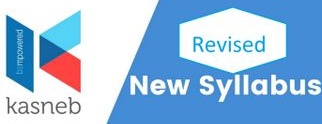Define the term Monetary Policy and discuss any four instruments of this policy used to control and regulate money supply the Central Banking Authorities
Monetary policy refers to the manipulation of money supply, liquidity and interest rates in the economy in order to achieve increased employment, economic growth, reduced inflation and improved balance of payments.
Monetary policy works through the intermediary of monetary policy instruments such as the bank rate, open market operations (OMO), variable reserve requirement (cash and liquidity ratios), funding, marginal requirement, selective credit control and moral suasion.
This policy relates mostly to credit control which is the control of the lending capacity of commercial banks and other financial institutions.
Monetarists largely content that inflation is caused a prior increase in money stock, and therefore to control inflation, the growth of money supply must first be controlled.
Instrument of Monetary policy:
1. The Bank rate:- During inflation, for instance, money supply should be reduced. This could be achieved way of increasing the bank rate ( the rate at which commercial banks borrow from the Central Bank) to discourage borrowing Commercial banks from the Central Bank and the public from commercial banks (since an increase in the bank rate translates into higher commercial banks lending rates to individuals or corporates). The Central Bank could increase money supply reducing the bank rate and therereducing the interest rates charged commercial banks to the public.
2. Open Market Operations (OMO):– During inflation, the government sells its securities (such as treasury bills and bonds) in the stock exchange market (money market) which has an effect of reducing the amount of money in circulation (held the public and commercial banks). If however, the government wishes to stimulate the aggregate demand (increasing money supply) the decision should be to buy back the securities from the public/commercial banks; this increases the lending capacity of commercial banks and the purchasing power of the public.
3. Variable Reserve Requirement (VRR):– This instrument involves the cash and liquidity ratios, taken as a proportion of total deposits in cash and liquid forms, respectively. Money supply can be increased (decreased) reducing (increasing) these ratios, depending on the economic objectives of the Monetary Authorities.
4. Funding:- This is the conversion of short-term debt agreement into longterm. The government could be having budget deficits which it wants to control at manageable levels, and feels that it cannot afford to honour its short-term repayment obligations as they fall due. Moreover, this decision also has an effect of reducing the present money supply level although its going to be expensive servicing such long-term debts in future, in terms of high interest rates.
